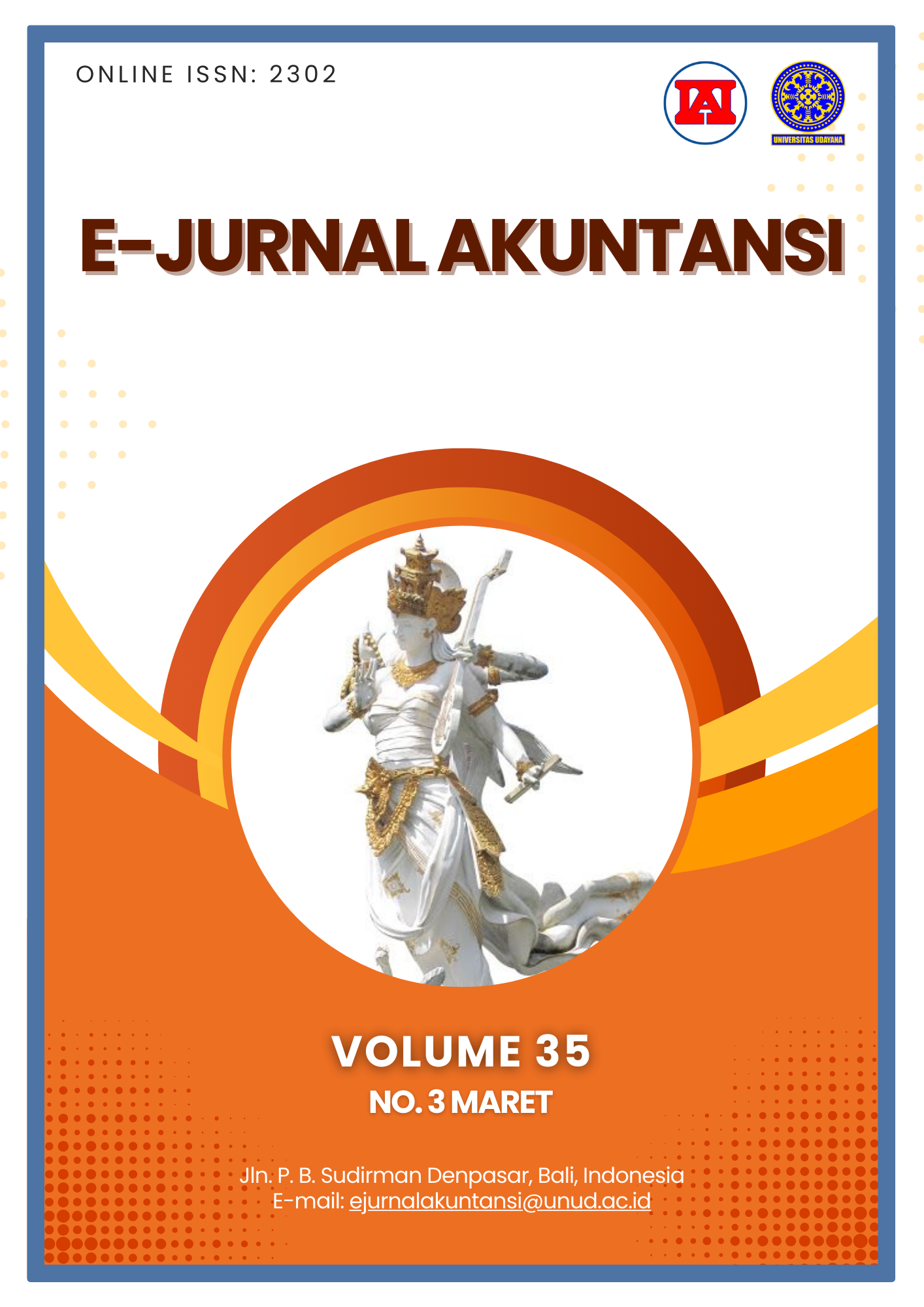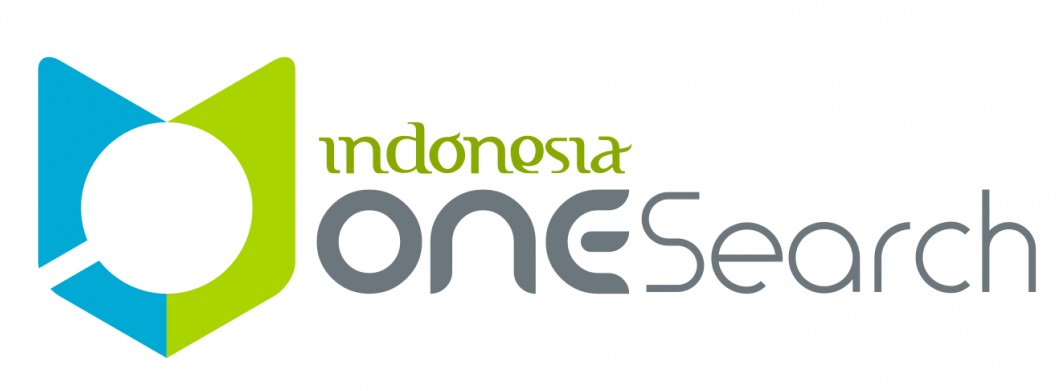The Influence of Financial Performance, Financial Distress, and Director Compensation on CEO Turnover: The Moderating Role of Internal Experience
Abstract
The Chief Executive Officer (CEO) serves as the primary regulator and controller of corporate operations, with the overarching goal of maximizing firm profitability. However, when shareholders perceive the CEO’s performance as unsatisfactory, leadership changes may occur. Frequent CEO turnover within a short period can have detrimental effects on organizational stability and performance. This study investigates the impact of financial performance, financial distress, and board of directors' compensation on CEO turnover, while also examining the moderating role of internal experience. The research focuses on manufacturing firms listed on the Indonesia Stock Exchange (IDX) from 2019 to 2022. Using purposive sampling, a total of 123 firm-year observations were selected. Logistic regression was employed as the primary data analysis technique. The empirical findings reveal that financial performance—measured by current ratio (CR), return on assets (ROA), and debt-to-equity ratio (DER)—along with financial distress and the CEO’s internal experience, do not significantly influence CEO turnover. Conversely, board of directors' compensation is found to have a significant effect on CEO turnover. Furthermore, internal experience moderates the relationship between board compensation and CEO turnover, amplifying its impact. This study highlights that while financial indicators and internal experience alone do not directly influence CEO turnover, compensation structures and internal experience jointly play a critical role in shaping CEO succession decisions.
Keywords: CEO Turnover; Financial Performance; Financial Distress; Board of Directors Compensation; Internal Experience.
Downloads
References
Brockman, P., Campbell, J.L., Lee, H.S. (Grace), & Salas, J.M. (2019). CEO Internal Experience And Voluntary Disclosure Quality: Evidence From Management Forecasts. Journal of Business Finance and Accounting, 46 (3–4), 420–456. https://doi.org/10.1111/jbfa.12361
Chijoke-Mgbame, A.M., Boateng, A., Mgbame, C.O., & Yekini, K.C. (2023). Firm performance and CEO turnover: the moderating role of CEO attributes. Corporate Governance (Bingley). https://doi.org/10.1108/CG-04-2022-0190
Dana, WM, AMP, INK, & Ardiati, PNH (2021). The Effect of CR, DER, TATO, and DAR on the Performance of Manufacturing Companies Listed on the IDX.
Edi, & Cristi. (2022). The Influence of CEO Characteristics on Earnings Management in Companies Listed on the Indonesia Stock Exchange for 2016-2020. Scientific Journal of Accounting and Finance, 4 (3), 1689–1703.
Evans, J. H., Luo, S., & Nagarajan, N, J. (2013). CEO Turnover, Financial Distress and Contractual Innovations. American Accounting Association, 89(3), 990-959. https://doi.org/10.2308/accr-50688
Faisal, A., Samben, R., & Pattisahusiwa, S. (2017). Financial performance analysis. 14 (1), 6–15.
Gunawan, J. (2016). The Influence of Performance on CEO Changes in Issuers Going Public on the IDX in the 2008-2010 Period. Calyptra, 5 (1), 1–12.
He, L., Shaw, T.S., & Fang, J. (2016). Managerial Labor Market during Institutional Transition: A study of CEO compensation and voluntary turnover. Corporate Governance: An International Review, 25 (3), 167–185. https://doi.org/10.1111/corg.12187
Hu, F., & Leung, S.C.M. (2012). Top management turnover, firm performance and government control: Evidence from China's listed state-owned enterprises. The International Journal of Accounting, 47 (2), 235–262. https://doi.org/10.1016/j.intacc.2012.03.006
Jatana, C. (2022). Board characteristics and CEO turnover–performance relationship: evidence from India. Corporate Governance (Bingley), 23 (4), 766–799. https://doi.org/10.1108/CG-01-2022-0038
Jostarndt, P., & Sautner, Z. (2007). Financial distress, corporate control, and turnover management, Journal of Banking and Finance, 32(10), 2188-2204.
Kaplan, S. N., & Minton, B. A. (2006). How Has CEO Turnover Changed? Increasingly Performance Sensitive Boards and Increasingly Uneasy CEOs. NBER Working Paper, 12465. http://www.nber.org/ papers/w12465
Kusumah, A. (2020). COVID-19 and the Manufacturing Industry in Indonesia: A Light Note. Faculty of Economics and Business, University of Muhammadiyah Riau.
Leker, J., & Solomon, S. (2000). CEO turnover and corporate performance. Scandinavian Journal of Management, 16, 287–303. https://doi.org/10.1016/S0956-5221(99)00023-8
Leung, W. K., & Zhang, Y. C. (2023). A Study of Chief Executive Officer (CEO) Turnover in China.
Radjen, D., & Stanisic, N. (2017). Financial distress and managerial turnover: The case of the Republic of Serbia. Prague Economic Papers, 26 (6), 646–660. https://doi.org/10.18267/j.pep.628
Rissi, DM, & Herman, LA (2021). The Effect of Liquidity, Profitability, Financial Leverage, and Operating Cash Flow in Predicting Financial Distress Conditions. 16 (2), 68–86. https://akuntansi.pnp.ac.id/jam
Rusdama, A. (2016). Earnings Management and CEO (Chief Executive Officer) Turnover in Indonesia.
Schroeder, RG, Clark, MW, & Cathey, JM (2020). Financial Accounting Theory (12th ed.). Salemba Empat.
Srimindarti, C. (2009). The Influence of Current Ratio, Total Assets Turnover, and Return on Investment on Company Performance in the Food and Beverages Industry Listed on the IDX.
Utami, ER, Kresnawati, E., & Putje, ED (2019). The Effect of Compensation, Leverage, Company Size, and Dividends on Turnover: An Empirical Study of Banking Companies in Indonesia (Vol. 21, Issue 2). http://jurnaltsm.id/index.php/JBA
Yucha, N. (2018). Financial Distress, Financial Performance and Turnover Management of Public Companies on the IDX in 2011-2015. Ecopreneur Journal, 1 (1), 30–35. https://doi.org/http://dx.doi.org/10.51804/econ12.v1i1.195

This work is licensed under a Creative Commons Attribution-ShareAlike 4.0 International License.

















